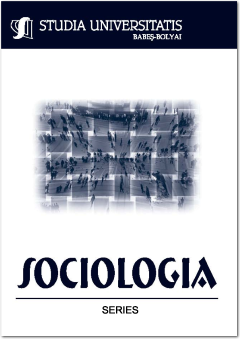DIGITAL NATIVES OR NOT? HOW DO ROMANIAN ADOLESCENTS CROSS THE BOUNDARIES OF INTERNET COMMON USE
DIGITAL NATIVES OR NOT? HOW DO ROMANIAN ADOLESCENTS CROSS THE BOUNDARIES OF INTERNET COMMON USE
Author(s): Bianca BaleaSubject(s): Anthropology, Social Sciences, Sociology, Cultural Anthropology / Ethnology, Social development
Published by: Studia Universitatis Babes-Bolyai
Keywords: digital natives; digital engagement; ladder of opportunities; digital inequalities.
Summary/Abstract: The present paper challenges the dominance of the digital natives’ agenda and turns its attention to the social context in which Internet usage among adolescents occurs. Findings indicate that even when young people are using the Internet with the same frequency, i.e. every day, the differences among them remain significant. Therefore, it can be argued that considering an entire cohort to be similar in terms of Internet use only due its age is a misconception. The way children make use of the Internet and the gratifications they gain after using it depend, as van Dijk (2005) showed, on the quality of access, on the level of skills, and on the personal (e.g. Experience, self-efficacy, confidence) and positional resources (e.g. Age, gender, socio-economic status). Questioning the main determinants that lead to the most advanced way to make use of the Internet, the logistic analysis shows that, in order for a Romanian adolescent to turn into an experienced user once he or she embedded the Internet in his or her everyday life, is a matter of skills, experience, and time online, and is less a matter of socioeconomic background. However, we have to keep in mind the previous path analysis’ findings, which emphasize that online experience, time spent online, self-efficacy, and digital skills are all determined, through direct or indirect effects, by demographic variables (i.e. age, gender and socio-economic status), even when age is held constant (Fizesan [Balea], 2012).
Journal: Studia Universitatis Babes-Bolyai - Sociologia
- Issue Year: 61/2016
- Issue No: 1
- Page Range: 59-76
- Page Count: 18
- Language: English

